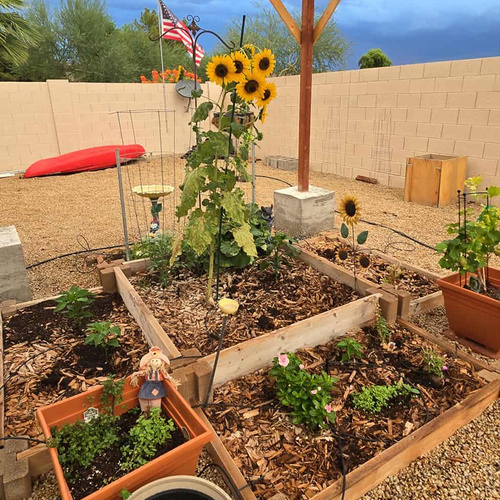Propagating fig trees (Ficus carica) by cuttings is a rewarding way to expand your fig collection and share popular varieties with others. One particularly efficient and fun way to do this is called the “fig pop” technique, which combines simplicity with a high success rate. If you are a fig lover like me, you will appreciate the simplicity and effectiveness of this method.
What is the fig pop technique?
In the fig-pop technique, fig cuttings are placed in a plastic bag with a moist medium (usually perlite or a mixture of perlite and peat) to root, creating a mini-greenhouse effect. This method is especially useful because it allows you to keep moisture levels constant while preventing overwatering, which can lead to rot. I first learned this technique when rooting plumeria cuttings. Read our article on bag rooting plumeria for more information.
Materials required:
A healthy fig cutting (about 6 to 10 inches long, with 3 to 4 nodes) A clear plastic Ziploc bag (I think the snack size is perfect) Perlite (or a mixture of perlite and peat) Perlite and Use half of the peat Permanent marker Label scissors or pruning shears Rooting hormone (optional but recommended) Electrical tape
Step-by-step guide to the Fig Pop Technique
Please select cuttings:
Select healthy semi-hardwood cuttings in late fall or early spring when mature fig trees are dormant or just beginning to wake up. Cuttings should be about 6 to 10 inches long and contain at least 3 to 4 nodes, which are where leaves and buds will appear.
Prepare cuttings.
Use sharp, sterile pruning shears to make a clean cut just below the node at the base of each cutting. If desired, dip the cut ends in rooting hormone to encourage faster rooting. If desired, make small vertical cuts (called “scratches”) along the bottom 1 inch of the cut to expose the cambium layer, which stimulates root development.
Prepare fig pop bags.
Fill a snack-sized plastic Ziploc bag about 1/3 full with moistened perlite or perlite and peat mixture. It should be moist, not damp. Fully zip the bag and snip one corner of the bag (opposite the zipper), making sure the cut is wide enough to slide the cutting into the planting area. Insert the cutting into the bag, making sure at least one node is buried in the medium. This node is where roots emerge. Wrap electrical tape around the cut and seal the cut inside the bag.
Label the cuttings:
If you propagate multiple varieties of figs, track each cutting using plant tags or by writing directly on the bag with a permanent marker. This will keep the cuttings moist and will make it easier to remove them from the bag without damaging the roots. Place it in a warm and bright place
Monitor moisture and growth
Place the bag in a warm place, ideally one where the temperature stays between 65°F and 75°F. A location near a window with indirect sunlight or under a grow light is best.
Be careful not to expose the bag to direct sunlight. Cuttings can overheat in a closed environment.
Check the bag every few days to make sure the perlite remains moist but not soggy. The bag creates a humid environment, so you don’t need to add water often, but if the perlite feels dry, mist it lightly.
After about 4 to 6 weeks, you should begin to see small roots emerging from the nodes of the cutting. Once the roots are several inches long and well developed, the cuttings are ready for transplanting.
These results are not typical, but I started 10 cuttings on September 21st and four of them rooted on October 4th. As of October 11, 6 out of 10 plants have easily visible roots.
Transplanting rooted cuttings:
Once your fig cuttings have strong roots, carefully remove them from the bag and transplant them into a small pot filled with well-drained potting soil. Be gentle so as not to damage the new roots.
Place the pot in indirect light for a few weeks until the plant gets used to its new environment.
Water lightly and gradually expose your fig tree to sunlight over time.
tips for success
Temperature: Fig cuttings root best in warm conditions, so try to keep the temperature consistent. Water: Avoid overwatering your perlite or potting medium. Too humid environment can cause rot. It’s important to note that we don’t add any additional moisture to these fig pops. And even though we started in the fall where I live, daytime temperatures were over 90 degrees and nighttime lows were 58 degrees Fahrenheit. Timing: Early spring or late fall is the best time to take cuttings, as figs root more easily when they are dormant or have just emerged from dormancy. Patience: Depending on the type of fig tree and conditions, rooting can take 4 to 8 weeks. Don’t rush the process.
Why the fig pop technique is effective
The Fig Pop technique is popular for several reasons:
Moisture management: Using plastic bags will help retain moisture without over-saturating the cuttings and prevent rotting, a common problem when rooting cuttings. Mini greenhouse effect: The sealed environment inside the bag maintains high humidity and promotes root growth. Space efficient: Unlike traditional rooting methods that require trays or multiple pots, the FigPop technique is compact and can be performed in minimal space.
In just a few months (or weeks), you’ll have a healthy, rooted fig tree ready to plant and grow. Whether you’re expanding your own fig orchard or gifting a loved one with new plants, this method provides a simple and reliable way to propagate fig trees.
Happy Fig!





